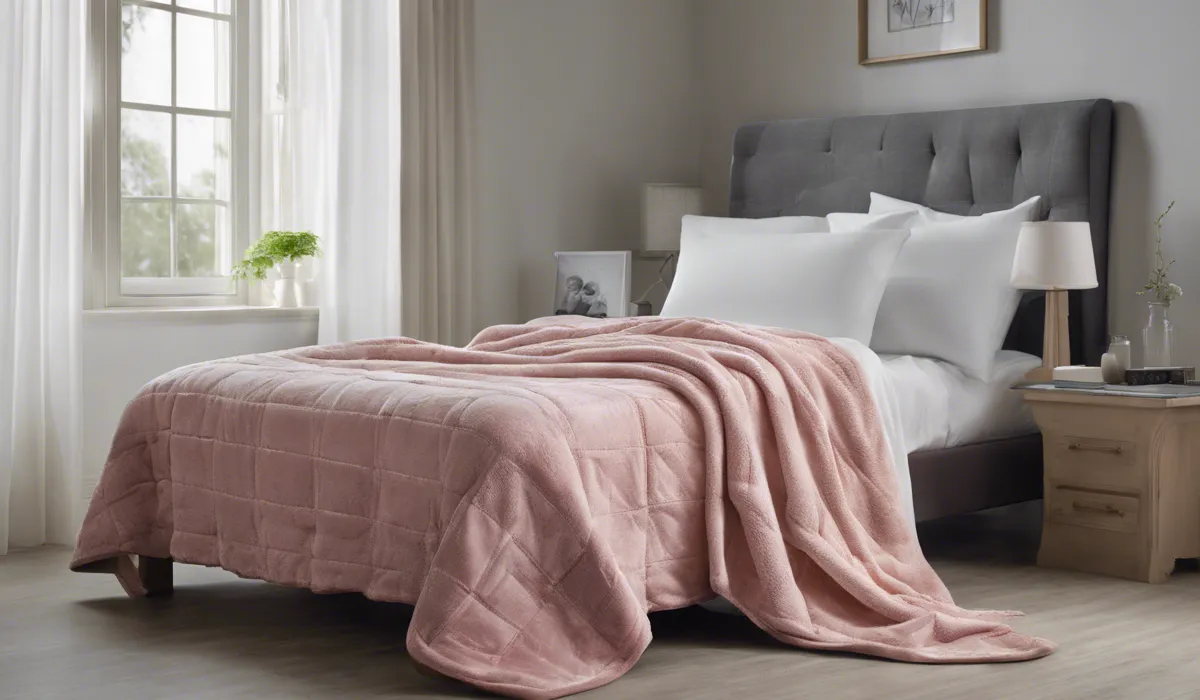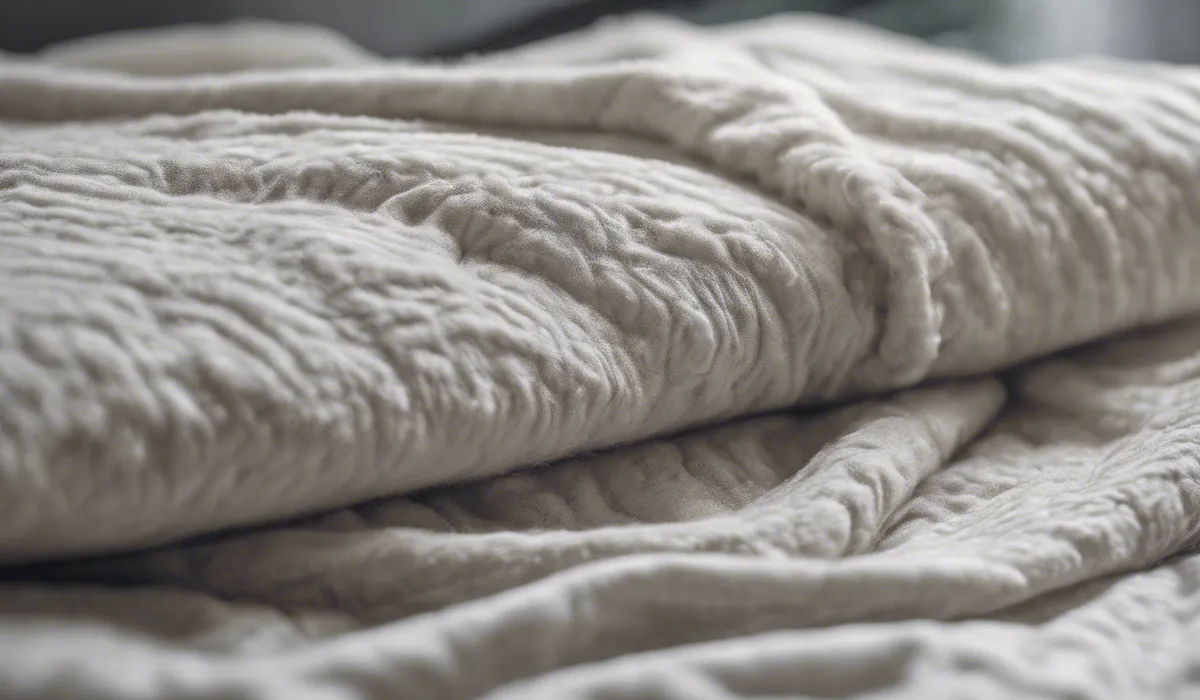To remove mildew from blankets, wash them with hot water and a cup of white vinegar. If stains persist, soak in a solution of oxygen bleach before laundering. Dry thoroughly in sunlight to prevent mildew return.
Identifying Mildew in Blankets

What is Mildew?
Mildew is a type of mold, a fungus that thrives in moist environments. It can appear as a patch of gray or white that gradually turns darker.
It’s not only unsightly but can also be harmful to your health if not dealt with promptly.
Signs of Mildew on Blankets
On blankets, mildew commonly manifests as musty odors, visible spots, or a powdery substance.
If you notice any of these indicators, it’s crucial to act quickly to prevent the spread and damage to the fabric.
Acting Quickly Against Mildew
Ignoring mildew can lead to extensive fabric damage, making your blankets unusable. As soon as you identify mildew, it’s important to remove it to protect your investment in your bedding.
Health Implications of Exposure
Exposure to mildew can cause respiratory issues, allergic reactions, or aggravate asthma. Protect your health by keeping your blankets clean and mildew-free.
Mildew Removal Techniques

Pre-Treatment Steps
Removing Excess Mildew
Begin by brushing off any loose mildew from the blanket outdoors to avoid spreading spores inside your home. Wear a mask if you have allergies or respiratory sensitivities.
Choosing a Cleaning Area
Select a well-ventilated area for cleaning your blankets. Fresh air helps in dissipating spores and accelerating the drying process post-wash.
Washing Machine Method
Detergents and Additives
Wash your blankets with hot water and add a cup of white vinegar to the cycle. For persistent stains, consider pre-soaking in an oxygen bleach solution.
Machine Settings
Use the highest temperature setting safe for the fabric and a gentle cycle. The heat helps kill mildew spores, while the gentle cycle protects the integrity of your blankets.
Hand-Washing Method
Guide to Hand-Washing
Submerge your blanket in a mixture of hot water and a natural cleaning agent, like lemon or salt solution. Gently agitate the fabric and allow it to soak before rinsing thoroughly.
Natural Cleaning Agents
Lemon juice and salt are effective in breaking down mildew without harsh chemicals. They are safe for most fabrics and leave a fresh scent.
Post-Washing Care
Drying Techniques
After washing, dry your blankets completely to prevent mildew from returning. Use an outdoor line or dryer on a sunny day for best results.
Using Sunlight
Direct sunlight is a natural mildew deterrent. If weather permits, allow your blankets to dry outside to benefit from the sun’s sanitizing properties.
Preventing Future Mildew Growth on Blankets

Proper Storage Practices
Ideal Conditions
Store your blankets in a cool, dry place with good air circulation. Avoid damp areas like basements or closets without ventilation.
Tips for Humid Climates
In humid climates, consider using moisture-absorbing products or storing blankets in airtight containers to keep mildew at bay.
Regular Cleaning and Maintenance
Cleaning Frequency
Regularly wash your blankets according to the manufacturer’s instructions. Frequency may vary depending on use, but a good rule of thumb is to clean them at the start and end of the season.
Dehumidifiers and Air Circulation
Using dehumidifiers in your home helps maintain a dry environment. Ensure good air circulation by occasionally airing out your blankets and using fans or open windows to reduce moisture.
Additional Protective Measures
Antimicrobial Treatments
Consider using antimicrobial sprays that are safe for fabrics. These can offer an additional layer of protection against mildew growth.
Moisture-Resistant Covers
For added security, use covers and containers designed to resist moisture when storing your blankets. This can significantly reduce the risk of mildew formation.
FAQs About Removing Mildew from Blankets
What is the best temperature water to wash blankets with mildew?
For removing mildew from blankets, it is best to wash them with hot water.
Can white vinegar help remove mildew from blankets?
Yes, washing blankets with a cup of white vinegar can help remove mildew.
What should I do if mildew stains persist after washing?
If mildew stains persist, soak the blankets in a solution of oxygen bleach before laundering again.
How should blankets be dried after washing to prevent mildew from returning?
Blankets should be dried thoroughly in sunlight to prevent the return of mildew.
Is it safe to use oxygen bleach on all types of blanket materials?
Oxygen bleach is generally safe for most fabrics, but it is essential to check the blanket’s care label for specific instructions or conduct a spot test before soaking.
Final Thoughts
For effective mildew removal from blankets, wash them in hot water with a cup of white vinegar.
Persistent stains may require soaking in an oxygen bleach solution prior to regular laundering. To ensure mildew does not reoccur, dry the blankets thoroughly in the sunlight.
